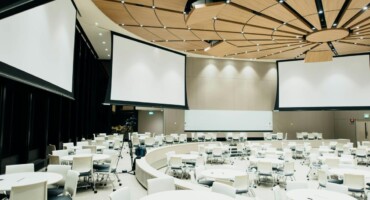Art has always been a mirror of society, reflecting your beliefs, values and, of course, its diversity.
When exploring an art gallery, we are transported to a universe of unique expressions and perspectives, but is this diversity reflected in the works and artists that gain prominence?
This article proposes a reflection on the importance of representation and inclusion in the contemporary art gallery.
The Need for Representation in Art
Representation in art goes beyond the mere inclusion of different ethnic groups, cultural and social.
It is about the ability of different voices to be heard, valued and celebrated.
The art history it has been, for a long time, dominated by Eurocentric narratives, relegating diverse communities to a secondary role.
Today, artists from diverse backgrounds are challenging these norms, claiming your space and offering a wealth of perspectives.
When we look at contemporary art, we see a growing movement towards more equitable representation of artists from different backgrounds.
Museums and galleries are actively seeking to expand their collections, highlighting works that reflect a broader range of experiences and identities.
This not only enriches artistic narratives, but also contributes to a deeper and more inclusive understanding of society.
Inclusion: More than Surface Appearances
Including artists from diverse backgrounds is not just about the presence of works on the gallery walls.
It is essential to also address the institutional structures that shape the art world.
Many times, artists from marginalized communities face significant barriers to accessing opportunities, galleries and collectors.
Promoting inclusion requires a conscious effort to overcome these systemic barriers.
This involves creating educational programs, provide financial support and ensure opportunities are available on an equitable basis.
Art galleries have a responsibility not only to exhibit a variety of artists, but also to create an environment that fosters growth and long-term success for everyone.
The Contribution of Art to Global Dialogue
Embracing Diversity in the Art Gallery, we are contributing to an enriched global dialogue.
Art is a universal language that transcends borders and connects people from different backgrounds.
By highlighting a variety of voices, we build bridges of understanding and empathy, challenging stereotypes and promoting a richer, more complex view of the world.
In addition, diversity in the art gallery not only reflects the multiplicity of experiences, but also inspires new ways of thinking and creating.
The mix of cultural influences, styles and histories provides fertile ground for artistic innovation, leading to new aesthetics and approaches that enrich the global artistic landscape.
Conclusion: Towards a Truly Inclusive Art Gallery
Diversity in the art gallery isn't just a passing trend, but an urgent and vital need for the evolution of the artistic scene.
By embracing representation and promoting inclusion, galleries not only break with established norms, but they also contribute to the construction of a fairer and more equal future.
It is imperative that healers, artists, collectors and enthusiasts art recognize the crucial role they play in promoting diversity in the art gallery.
By doing so, we are not only transforming artistic spaces, but also positively impacting communities and society as a whole.
The art gallery of the future is one that celebrates the richness of the human experience in all its diversity, creating a lasting legacy of inclusion and understanding.




